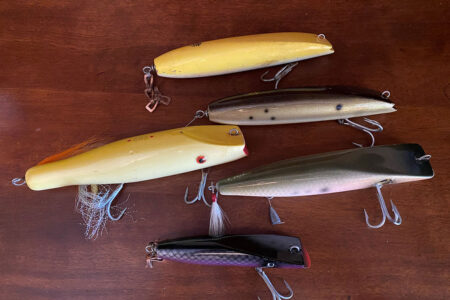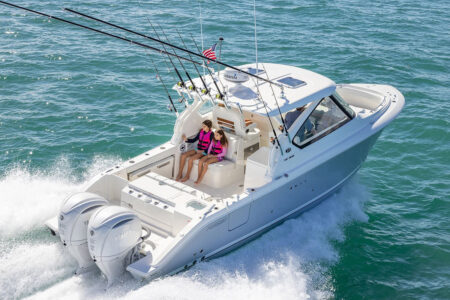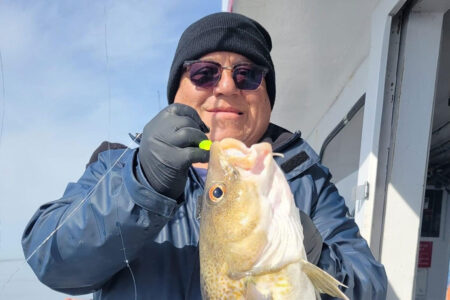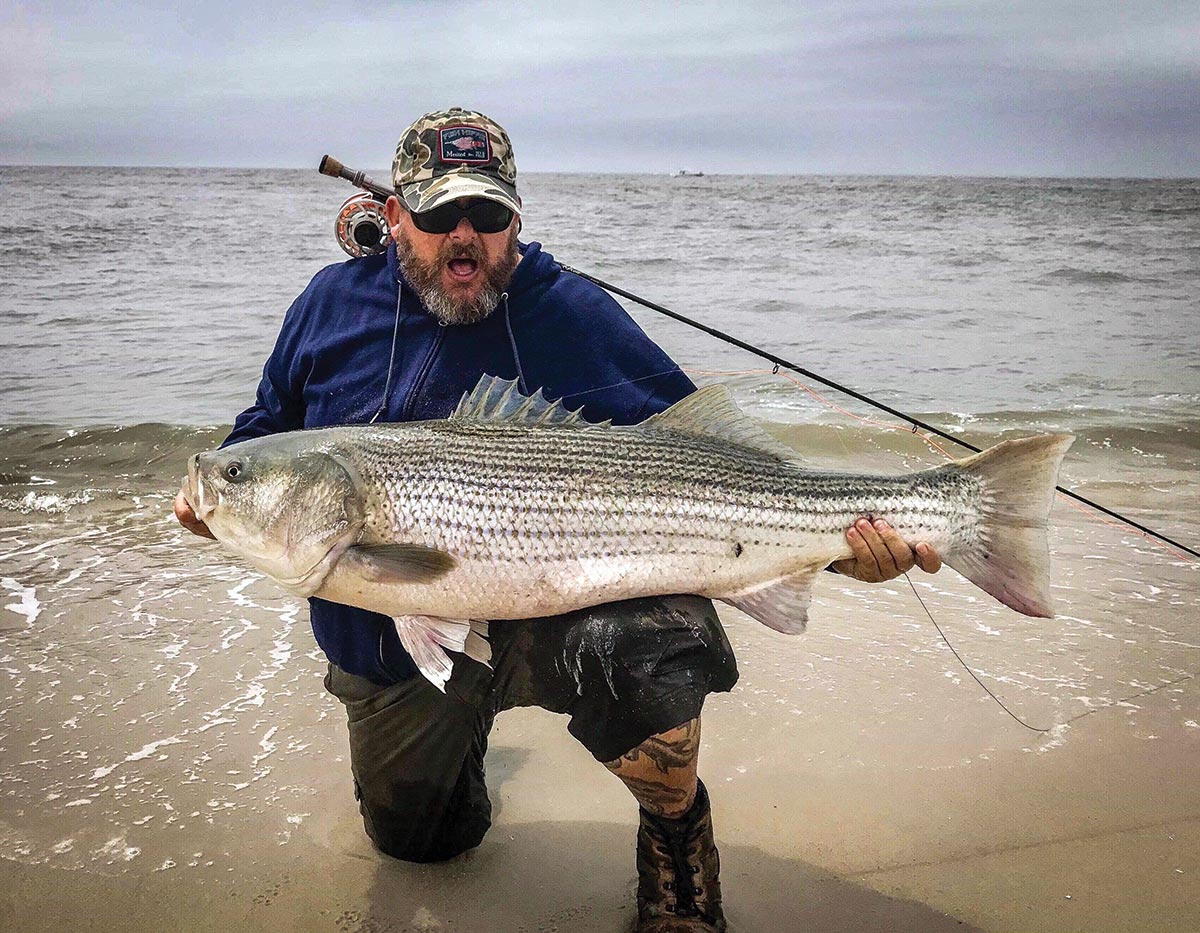
Imperatives that will get you stripers when fly fishing the Striper Coast.
While few anglers utilize fly fishing among their fishing choices when hunting large striped bass, it is often the best problem-solver when linesides are playing hard to get and feasting on small prey. I’ve seen it often enough over the years to put my faith in fly fishing; in fact, so much so that my wife and I rarely go fishing with spinning or conventional gear anymore.
Nights
In my opinion, all surfcasting should be done at night. There are exceptions but they don’t happen often enough for mention here. My first striper fishing was done over 60 years ago and all we ever did, even then, was fish at night. In order to function, inshore bass need cover for protection and that comes in three forms: depth, darkness, or rough water. Darkness is the only predictable certainty. Rough water is hard on fly fishing, and depth presents somewhat of a problem unique to fly fishing.
For new fly casters, learning to do it at night involves challenges. For those experienced in fly fishing, the night adjustment is a cinch. Even badly done, if you can deliver a fly moderate distances you are fishing with an advantage. If you think about it, night fishing is never done in total darkness so you will always have a good feel for the quality of your casts, drifts, and view of the water. It’s not that bad and for those with freshwater fly fishing backgrounds your accommodation is minimal.
Easy Water
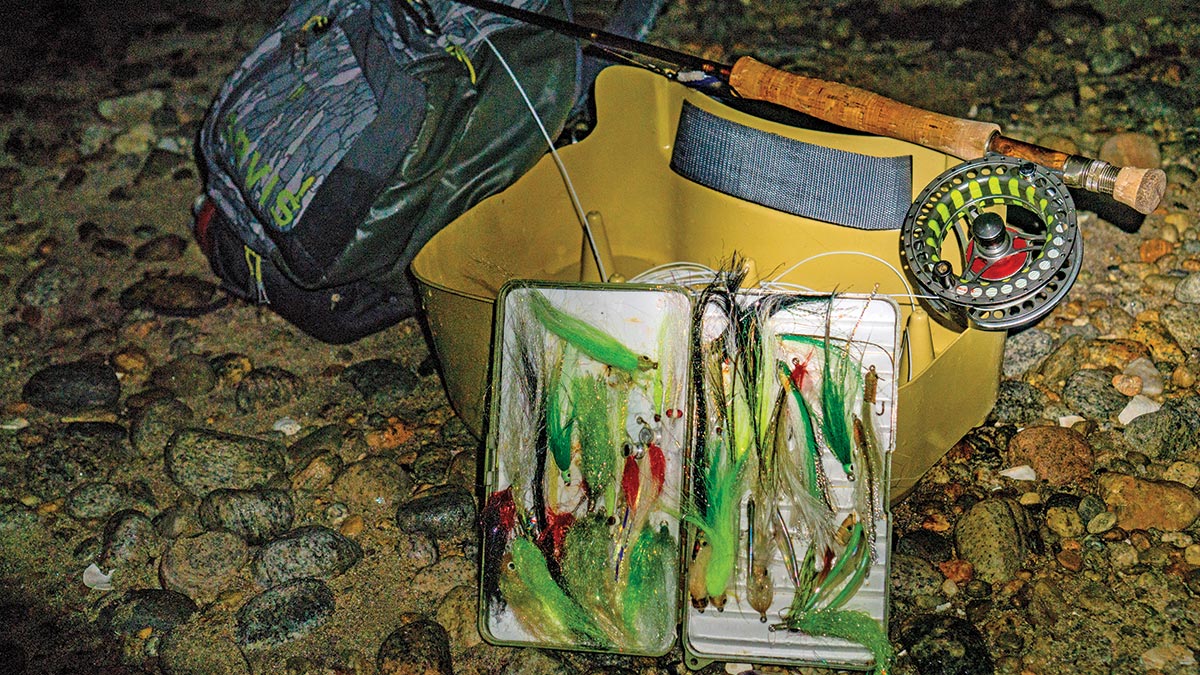
Experienced fly fishermen can deal with any water. However, new guys should pick their water more carefully. Surfy open beaches are difficult to deal with. They present problems with the placement of retrieve stripping. There is too much for inexperienced fly fishermen to deal with what with stripping baskets and retrieve issues when big waves are booming from some distant hurricane. Go in some back estuary where the water is quiet.
Outflows on the drop or places where rising currents provide moving water frequently draw stripers and sometimes blues. Commonly, the back ponds draw more gamefish anyway because that is reliably where the bait can be found. These quiet locations permit you to drop your stripping into the current, better manage your casts and drifts, even hear feeding gamefish positioned in the current. Of course current gives the bass or bluefish a fight advantage, but we are all looking for a good fight. Fly fishing should be given every advantage. Fishing from shore is tough enough without adding to the angst.
Strength Issues
Fly rods rarely, if ever, break while fighting fish. That said, the other three elements—line, backing, and leader—are a limiting problem. Fly lines have a breaking test of 30 pounds. You can have backing that is 50 pounds and the max leader tippet strength is 20. Any leader larger than that will spook bass away from hitting. Worse, this short length of 20-pound in your tapered leader provides the angler with no stretch protection so there is little a fly fisherman can do to beef up his or her gear for big game applications. These are not brook trout, and I have caught enough 40-pound-plus linesides fly fishing to know that all fly fishermen play an edge with a huge potential for break-offs. Nevertheless, I think it is worth the risk dealing with a fish that won’t hit anything else but a fly.
Choosing the Fly
The very nature of fly casting is that the tackle relies upon a weightless fly. The smaller the fly the easier it casts. Anyway, in fly fishing it is the line that is cast. The conventional fisherman’s old saw about big bait catching big fish may work sometimes, but those guys need casting weight while we don’t want it. In any case, size, like casting distance, gets too much attention.
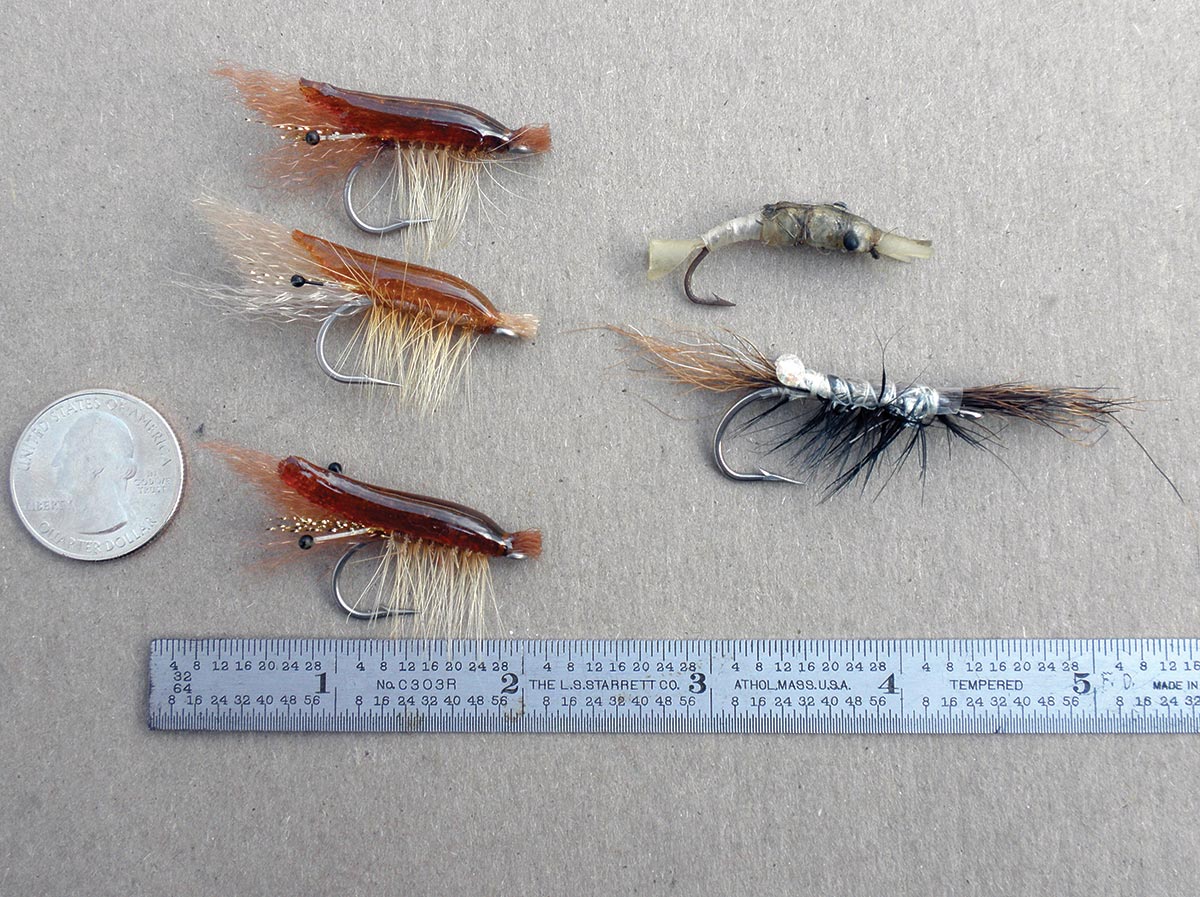
One charm in fly fishing, among others, is that when bass are feeding on small, picky stuff we can drift fruit flies if we have to unzip lips. I make a study of what bass are feeding on whenever we go to a new estuary. I walk in the back and shine my light discreetly on the bottom and see what is crawling, digging, drifting, or even swimming. Then I tie on a fly that comes closest to imitating that which I have spied. I have found mole crabs, grass shrimp, juvie worms, silversides, and even snapper blues. Stripers will sell their sisters to get grass shrimp, and I have a ton of shrimp imitations in my kit. Still, it is hard to tie really nice ones so I buy yum ones in a fly shop in Kittery; a good fly pays for itself. That is not to say other patterns don’t work. Recent fly love affairs have included the black Owens Velvet Eel, which can be the keys to the castle on nights when we don’t know what the bait is. I would have to kill you if I told you any more.
Never jiggle or give life to a fly. If a fly is a right and proper imitation, the pattern itself will indicate a suitable offer for fooling a gamefish. We just cast across the current and dead drift under tension. They will take it; of course I have the advantage of already knowing what stripers like. You, being new to fly fishing, are faced with building confidence in a variety of fly patterns.
Debunking Fly Fishing
Those of you who know me remember that I spent my life as a rod and reel commercial. Those guys, and admittedly I was one of them, were out for blood in their fishing. Nothing frustrates commercials more than a ton of stripers not willing to contribute to their bank accounts. Having spent many mid-watch hunts with those guys, I knew them all and not a one of them had any appreciation for fly fishing until they saw me load up with stripers when they could not buy a hit. Not once but many times they stood by in shock with their Atoms, bottle plugs, and rigged eels while I filled the boxes. The late Al Bentsen, who was the Long Island highliner of a then famous striper club, said, “I would not have believed it if I had not seen it with my own eyes.” Yet, few striper wackos fly fish.
I have written seven successful striper books. Admittedly, the eighth one, Fly Fishing the Striper Surf, (Burford Books) is a disappointment because it can’t get out of its advance. I’m not sure why that is but I believe to my core that there is little interest in fly fishing for stripers, especially from shore. Big mistake.
